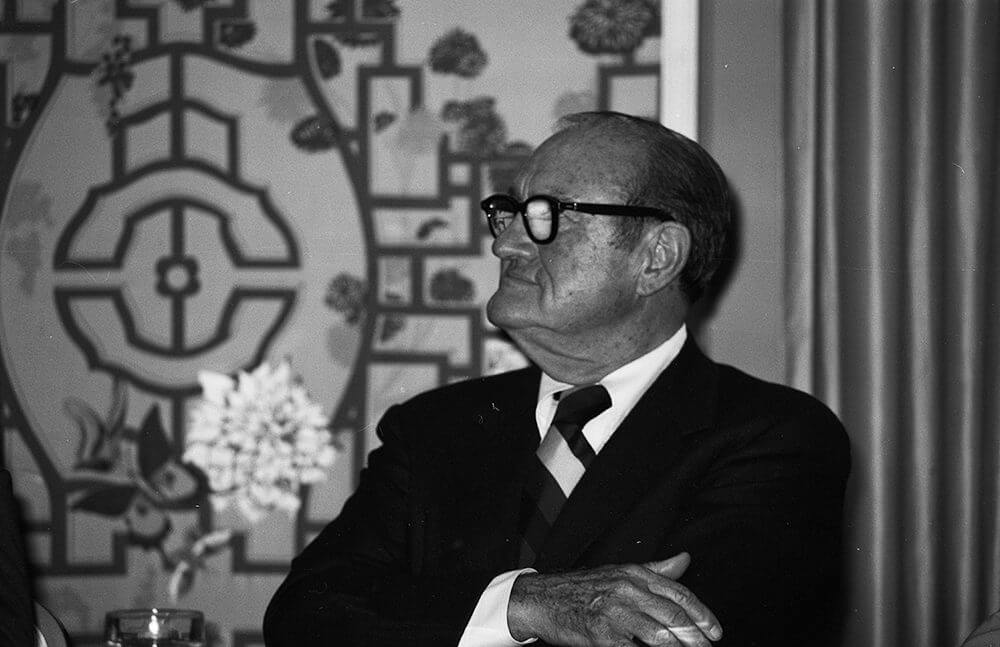
People Change But Not Very Much
L.D. Pankey famously said, “People change but not very much,” and hearing this for the very first time represented an “aha moment,” as it put into proper context an important realization I had previously ignored.
As dentists, we know a lot, and we have worked very hard to acquire that knowledge. As a consequence, we naturally want to use it to help others. But there’s a problem. Often times others act like they don’t want to be helped. Often times others act like they don’t want to be better. Often times others act like they don’t want to map a course toward a higher level of health. So, we struggle to make sense of it and even judge others as a result of it.
Developmental psychologist Jean Piaget, PhD told us that the motivation to change comes from within the individual, from their perception that they’re in a state of “disequilibria,” wherein what they’ve been doing in the past (including what they believed to be true) isn’t producing the outcome they want. And as a consequence, the person is confronted with an uncomfortable truth. They can’t keep on doing what they have been doing and expect a different outcome. They’re going to have to suffer through some personal change if they sincerely desire to experience something different in their life. And executing the change is going to cost them something namely time, energy, and money. In other words, significant change can’t be done for them or to them. It’s an “inside-out” process that they will have to do for themselves.
Some people will look at their need to change and ignore it. They will say to themselves the cost is too high for them to pay, or they will simply rationalize away their need to change in an elaborate form of denial. Others will immediately confront the challenge, learn what they need to know, figure out a way to pay the price, and move on. So, what’s the difference between these people?
Perception… values… readiness.
What Can We Influence?
In our world as dentists, we can build up a person’s understanding of their situation through CoDiscovery, and therefore we can facilitate how they frame, prioritize and think about what they have learned. But we can’t make them change. We can’t cause them to act. We can only honor where they are with it all and stand ready to assist them when they are ready to move forward.
Significant change often requires a change in a person’s value structures and the hierarchy of those structures. Piaget called changes of this type “accommodations. Piaget said that they are made at the person’s own pace after the person senses that he or she is in a state of disequilibria. And so, Dr. Pankey was right. Those who change do so not because we are highly skilled at “case presentations.” They do so because they want to, and it may occur only a little bit at a time.
Related Course
E4: Posterior Reconstruction and Completing the Comprehensive Treatment Sequence
DATE: February 26 2026 @ 8:00 am - March 2 2026 @ 2:30 pmLocation: The Pankey Institute
CE HOURS: 44
Dentist Tuition: $ 7500
Single Occupancy with Ensuite Private Bath (per night): $ 355
The purpose of this course is to help you develop mastery with complex cases involving advanced restorative procedures, precise sequencing and interdisciplinary coordination. Building on the learning in Essentials Three…
Learn More>







Paul – great topic! My experience has taught me, through the years, that learning is most often a “Two-way Street” especially from a behavioral or developmental point of view. We are truly in the “Developmental Business” and we thought we signed up to be a dentist! Often I would hear from practicing dentists; “why didn’t they teach us that in dental school?” We begin to understand, through experience, that there are many things to learn along the way, which help transform our way of interacting and supporting our patients dental experiences. When confronted with an experience as you have described, I would often wonder about how I might listen differently, ask an appropriate open ended question, walk along someone for varying amounts of time, and invite them, again and again, in different ways, to another point of view, even in the face of their resistance! Developmentally, we cannot take another person where we ourselves have never been. So a “two-way challenge” can become a shared experience in discovery (Co-Discovery) and not just a “telling” experience for the patient. For me, this is an on-going challenge that we can have for all of our life and with each attempt to continue a conversation, we participate in our learning and invite others to engage in a process, remembering – it is easier said, than done! Thanks for your writing, Paul!
Thanks Rick shaping the conversation it include learning over time…
joan
Let me try again: Thank you Rich for shaping the conversation to include learning over time.
Thanks Joan – you can condense my many words! Rich
Another good post Paul. We feel our role is to help folks develop a higher level of discrimination and deeper level of understanding about the outcomes that they want, and are able to achieve if they choose to. Good old Barkley, King and Roth – outcomes, means and prices.